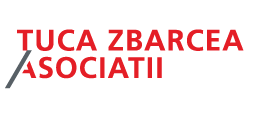In the context of mergers & acquisitions (M&A), Intellectual Property (IP) plays an extremely important role in assessing the value and risks associated with the target company.
IP refers to creations of the human mind, such as inventions, literary and artistic works which are protected by copyrights, designs, trademarks, names, and images used in the course of trade, trade secrets, know-how. IP rights are protected by a wide range of laws granting the creator or owner exclusive rights to use, reproduce, market, distribute or otherwise commercialize, and overall to control the use by others of these creations for a specified period in a specific territory.
We propose to explore in this article the various aspects of IP in the context of M&A projects, underlining the complexities, challenges, and strategic considerations that arise when dealing with IP assets.
- Due Diligence
- Unveiling the IP Portfolio
Before completing an M&A deal, it is essential to properly conduct a detailed due diligence.
An IP due diligence involves a comprehensive review of the target company's IP portfolio, which mainly includes an analysis of the:
- trademarks
- patents
- designs
- copyrights (including, among others, artistic/literary works, computer programs, etc.)
- domain names
- trade secrets
- know-how and any other relevant IP rights which may be held by the target.
The review should also include an assessment of
- any pending IP litigation and (ideally) of any potential infringement risks, as well as of
- any licenses or other agreements that the target company has in place with respect to its IP assets.
Assessing the strength, validity, and enforceability of the IP assets is crucial for the acquiring party to evaluate the potential risks and opportunities associated with the target's IP.
- Main issues which may arise from an IP perspective
- Employee-related IP issues
During the due diligence process, it is important to carefully analyze employment agreements to verify whether they contain IP clauses or provisions clearly outlining the transfer and ownership of IP rights from the employees to the employer. This analysis ensures that the legal transfer of IP rights has been properly provided for and documented. The acquiring party must be diligent in preserving the employment inventions, copyrights, trademarks, and any other asset which may be protected by IP rights and contributed to the target company's success.
From the perspective of the Romanian applicable legislation, while the economic copyrights over computer programs (software) created by one or more employees as part of their job duties or at the instructions of their employer shall belong to the latter, for any other IP rights, including software developed by the employee outside working hours, a specific assignment clause to the benefit of the employer must be provided for in the employment agreement.
- IP issues related to collaboration agreements
In addition to employment agreements, collaboration or contractor’s agreements are also important components that require verification of IP clauses. It is essential to check whether the transfer of IP rights from the collaborator to the target entity has been properly provided for and documented.
The acquiring party must be diligent in preserving its IP rights, especially when it comes to software detained by the company or any other IP, whether protectable or not.
In such case, also from the Romanian law perspective, the proper transfer of the IP rights (including copyrights) shall be made.
- Valuation of IP Assets - determining Worth
The valuation of IP assets is an important step in the M&A process. Accurately assessing the value of patents, trademarks, and other IP assets is helpful in determining the overall transaction value. Additionally, understanding the potential to generate future revenue from these assets is vital for negotiating a fair deal. Valuation experts, working together with IP legal professionals, play a key role in this process, ensuring that the true worth of the IP portfolio is recognized.
- Mitigating Risks
Identifying and mitigating risks associated with IP is imperative for a successful M&A deal. Potential challenges may include pending lawsuits and other pending procedures before the IP authorities, incomplete or invalid IP clauses in the employment / collaboration agreements, licensing disputes, existence of third-party claims, inaccurate assignment agreements for trademarks or other IP rights, etc. Legal teams need to carefully evaluate these contingencies and design strategies to address or minimize the associated risks. This not only protects the acquiring party but also ensures a smoother integration process post-acquisition.
- Integration of IP Portfolios
Once the deal has been closed, integrating the IP portfolios of the merging entities becomes a key focus. This involves aligning different strategies, such as consolidating trademark portfolios and ensuring compliance with licensing agreements and/or any other type of agreements. A well-planned integration strategy not only maximizes synergies, but also helps to avoid any conflicts, thus maintaining and contributing to increasing the value of the combined IP assets.
- Post M&A transaction
After the transaction has been completed, the newly formed entity (new owners of the business) must be vigilant in protecting the IP rights. This includes monitoring the IP rights and any potential infringements, taking legal action when necessary, and actively managing the expanded IP portfolio. Proactive attitude in preserving the IP rights safeguards the value of the acquired IP assets and helps maintain a competitive edge in the market.
Conclusion
In the dynamic field of M&A, the role of intellectual property cannot be overstated. From due diligence and valuation to risk mitigation and post-merger integration, comprehensive understanding of IP issues is crucial for a successful M&A transaction. Legal professionals, working in collaboration with valuation experts and business strategists, play an extremely important role in assessing IP complexities, ensuring that the true value of intellectual property is recognized.
By Florina Firaru Managing Associate, and Dariana Istrate Senior Associate, NNDKP




